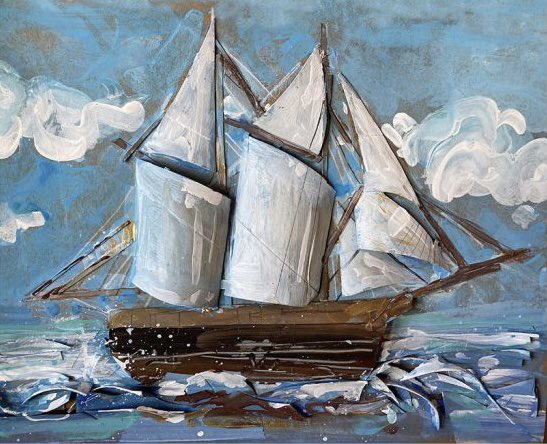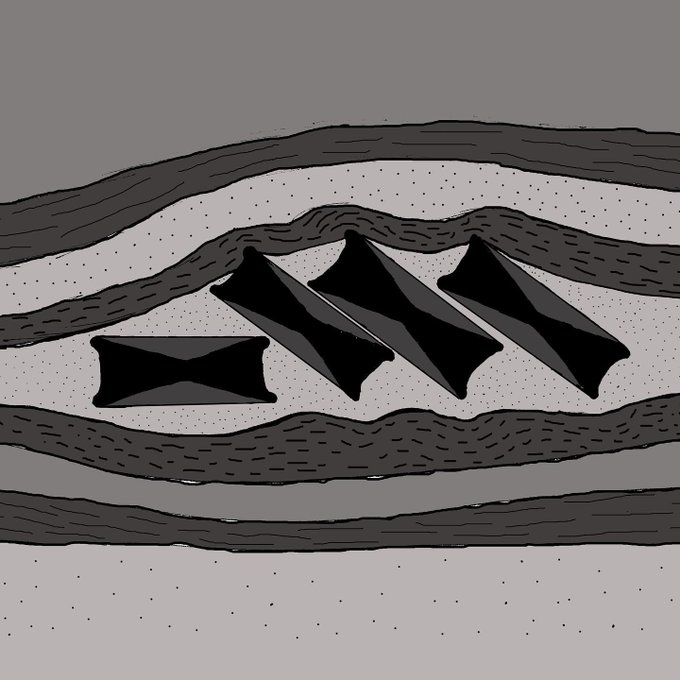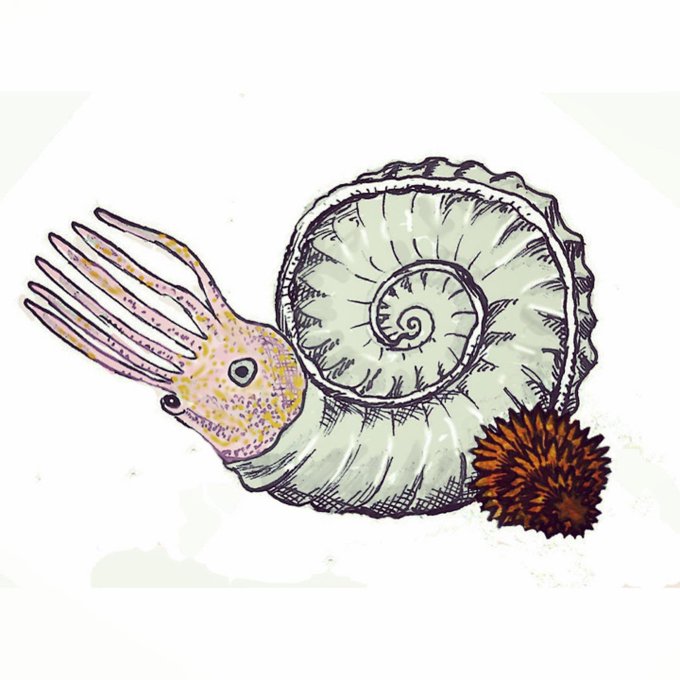We have lots of fun creative activities on the Make & Do page on our website - from painting a 3D pirate ship to making a clay Mary Anning model. They’ve been created by @DarrellWakelam and @CreativeClayFor All
Head to https://t.co/bPxLbhkA10 to find out what you could make.
Ichthyosaur bones can create patterns of ridges in the shale, even if bones can’t be seen. Other fossils & mineral concretions can form bumps too. Pic shows the bones in section - half an ichthyosaur bone looks like a black bow tie. 6/9
The scattered Ichthyosaur bones are buried in mud - the faster this occurs the better. All the bones will generally be within one narrow layer. As layers build up, the mud compresses more than the bone underneath, and can create a bump in the shale. 5/9
Ichthyosaur bones can create patterns of ridges in the shale, even if bones can’t be seen. Other fossils & mineral concretions can form bumps too. Pic shows the bones in section - half an ichthyosaur bone looks like a black bow tie. 6/9
The scattered Ichthyosaur bones are buried in mud - the faster this occurs the better. All the bones will generally be within one narrow layer. As layers build up, the mud compresses more than the bone underneath, and can create a bump in the shale. 5/9
Not uncommon to find worm tubes adhering to ammonite shells. They need a solid base to attach tubes, on a soft muddy sea floor a shell is a suitable substrate. At Lyme it was noticed that worm tubes seemed to specifically grow on keel of the ammonite shell (pic with red line) 1/8










